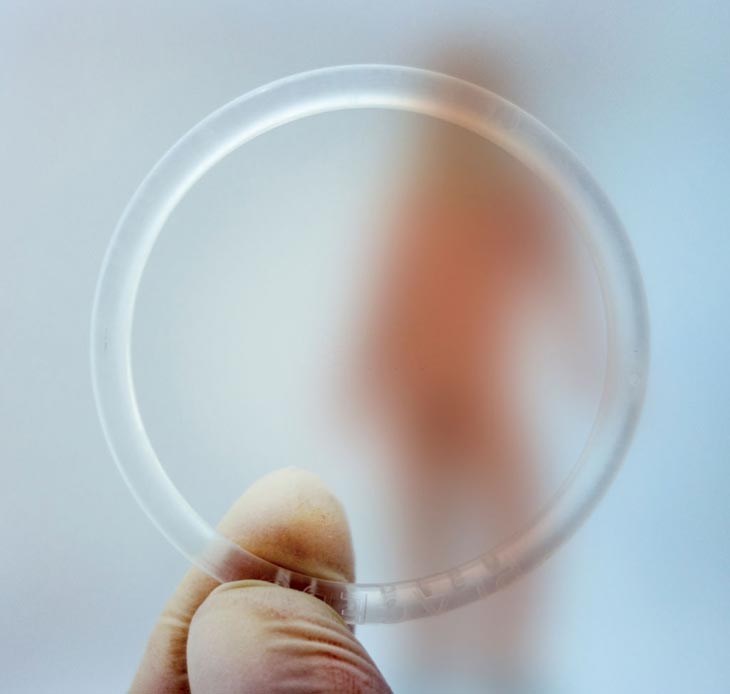Along with the development of today’s society, there are more and more methods of contraceptives and ovulation monitoring appearing.
Tracking ovulation with Mirena is one of those things that many people are curious about. What is Mirena, and is it effective in preventing pregnancy?
Scroll down this article to find out the answers and other facts about it!
Overview of Mirena (IUD)

What is Mirena?
Mirena is an IUD (an hormonal intrauterine device) that works in the uterus. It is T-shaped and small in size, made of soft, supple plastic, and contains a small number of hormones.
It can be placed and removed by your obstetrician whenever appropriate.
After the IUD is inserted, you may experience pain and bleeding. If the condition does not improve, you can see your doctor to check if it is placed properly.
Types of IUDs
On the market today, IUDs have two main types – hormonal (Skyla, Kyleena, Mirena, and Liletta) and copper (Paragard).
Both types are highly effective at preventing pregnancy. However, research in 2015 has shown that copper IUDs are not more effective than hormonal IUDs.
On the other hand, if hormonal IUDs are effective for 5 years, copper IUDs are effective for about 10 years.
Thus, depending on your budget and needs, you can select the appropriate IUD.
How Effective It Is
The Mirena hormonal IUD is 99.8%, higher than the copper IUD. This means that very few women get pregnant while using it. However, due to its high cost, this type of IUD has not been widely used.
Also, for this reason, it is usually applied to treat gynecological diseases such as menorrhagia, endometriosis, etc.
Tracking Ovulation With Mirena
Who Can Use It?
Mirena is a long-term birth control method that can be used by both premenopausal women and teenagers. Especially for people with uterine fibroids due to the action of the hormone progesterone.
However, women less than six weeks postpartum should not insert the Mirena IUD since it will affect the quality of milk and not be safe for babies.
This type of hormonal IUD is contraindicated in pregnant women, women with postpartum infections, breast cancer patients, patients with liver or kidney, cancer patients sensitive progestin.
So, you need to get a thorough consultation with your doctor before deciding whether or not to have this IUD inserted.
How IUD Affect The Period
So, how does Mirena prevent ovulation? Hormonal IUDs can make periods less frequent and faster. Some people even do not get their period when using them.
In The First Six Months
During the first three to six months, your periods will be irregular. Specifically, you will see more menstrual bleeding than usual, and your periods also increase.
About 20% of Mirena IUD users have periods lasting eight or more days in the first few months after insertion.
From Six Months Onwards
After the first six months, menstruation will be less, and the number of menstrual cycles a year will also decrease.
This means you do not get your periods every month, and it can be difficult to predict when you will get a period.
So, does Mirena prevent ovulation? The answer is yes, but not everyone likes that. When using the Mirena IUD, your hormone cycle will be affected.
Ovulation will also change. Nevertheless, how it changes depends on each person’s body. That is why some people ovulate when using Mirena while others do not.
How Does It Work?
Mirena contains a hormone called levonorgestrel (a type of progestin), commonly used in birth control pills.
More specifically, it releases a steady stream of low levonorgestrel into the uterus, so only an amount of the hormone enters your bloodstream.
Cervical mucus is then thickened and prevents sperm from entering the uterus. At the same time, Mirena curbs the movements of sperm so that it is difficult for sperm to reach the egg and fertilize it.
Moreover, the hormone in Mirena helps thin the uterine lining so that the egg is less likely to adhere to the uterus.
How Long Does It Last?
Unlike copper IUDs which last up to ten years, the hormonal Mirena IUD works for five years (according to advertising).
In reality, its effects are longer than recommended. According to a magazine review, it is effective for at least seven years.
Before and after the IUD is placed, Doctors will provide information regarding when to remove the IUD, side effects, etc.
Benefits & Side Effects
Benefits
What are the benefits of Mirena IUDs? The Mirena IUDs have many advantages, and one of those advantages is to help improve mood for those who are depressed due to hormonal fluctuations.
Apart from that, it is very effective in preventing pregnancy with about 99% effectiveness.
As Mirena contains the hormone levonorgestrel, found in birth control pills, you will not need to take the pills regularly and still get good results if you have this IUD inserted.
Additionally, it has become an ideal choice for many women because it can be detached from their uterus whenever their fertility changes without affecting reproductive health.
Side Effects
Besides the benefits of the Mirena IUD, it also has some side effects. Side effects may vary, depending on how sensitive each person is to the hormone included in this IUD.
Specifically, you can experience the following symptoms:
- Headache
- Dizziness
- Acne
- Chest tightness
- Irregular bleeding (may improve after six months of use)
- Lower abdominal or pelvic pain
- Mood swing
- Nausea
- Stress or emotional ease
- Weight gain
- Vomiting
- Bloating
- Loss of desire for sex
- Feeling itchy
- Swelling in the feet, face, or hands
Final thoughts
In short, this post has given facts about Mirena IUD. We hope that through this blog, you can know more about tracking ovulation with Mirena and its side effects.
Thereby, you can choose an appropriate way to prevent pregnancy, which does not affect your reproductive health and has few side effects.
